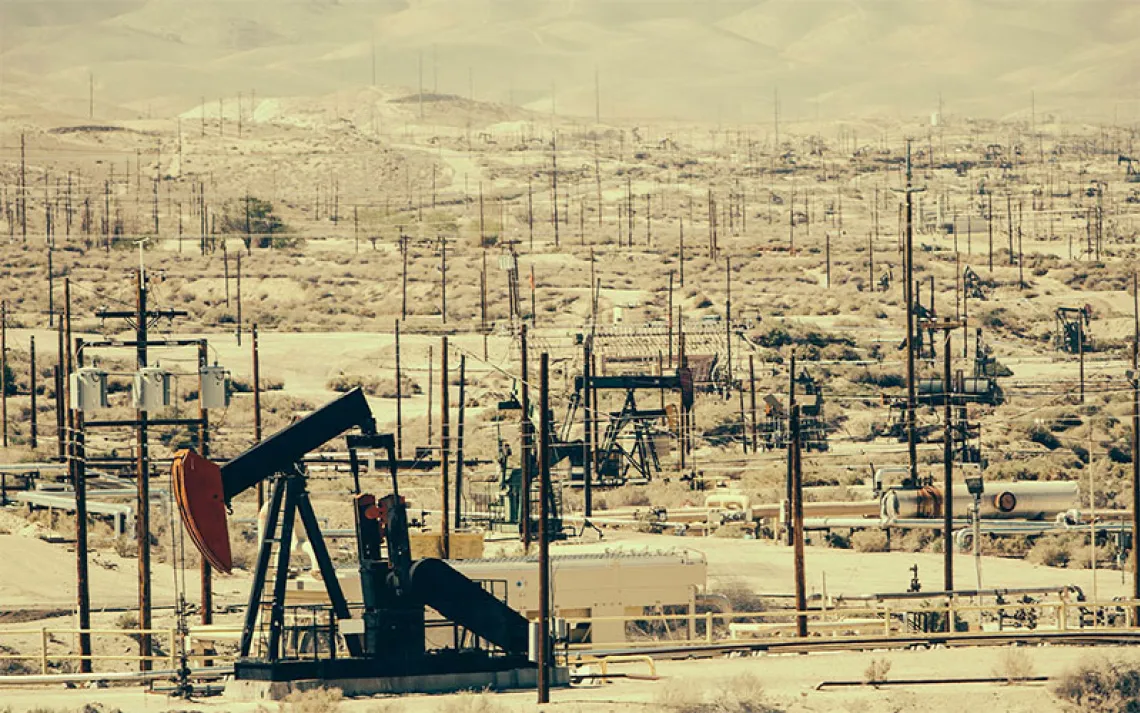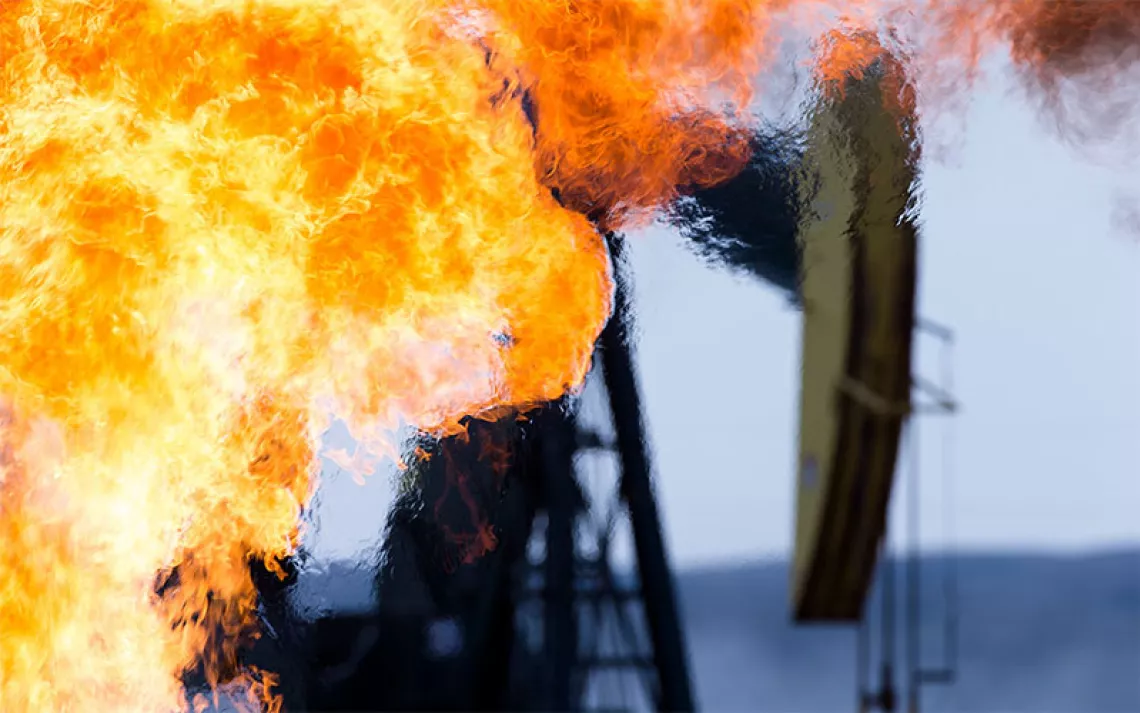Funding to Clean Up Orphaned Oil and Gas Wells Is on the Way. Now We Just Have to Find Them.
Drone technology offers a promising new way to track down abandoned sites

Dr. Timothy de Smet landing a drone outfitted with a magnetometer near Lockport, New York, in January 2022. | Photo courtesy of Dr. Alex Nikulin
The bipartisan infrastructure bill that President Joe Biden signed into law last November included $4.7 billion to clean up abandoned oil and gas wells across the country. This week, the Department of Interior announced that it is ready to distribute a good chunk of that money—$1.5 billion—to help states clean up inactive oil and gas wells that sit on federal land.
This is good news for anyone who cares about a stable climate. Abandoned oil and gas wells are notorious for leaking methane, a potent greenhouse gas that contributes to climate change. Since the first US oil well was drilled in 1858, unused wells were supposed to have been plugged and capped by the owner, but many have not been, or were poorly plugged, with anything from timber to scrap metal, and even bowling balls. The Environmental Protection Agency estimates that there are more than 3.2 million abandoned wells scattered around the country.
Many of these wells are difficult, if not impossible, to locate because records were poorly kept or have not survived, or the terrain has changed. Without accurate documentation, the most direct way to find them has been on foot, a process that is both time consuming and expensive.
Two professors at Binghamton University—Dr. Timothy de Smet, the director of the Geophysics and Remote Sensing Laboratory, and Dr. Alex Nikulin, associate professor of energy geophysics—have been working to solve the problem of tracking down abandoned wells with newly developed drone technology. De Smet got the idea while experimenting with using drones to locate unexploded ordnance in war-torn countries like Afghanistan and Ukraine.
“I was working with UAV-based long-wave thermal infrared mapping of the PFM-1 antipersonnel landmine in Afghanistan and other areas where these are used,” de Smet says. A self-described “sensor junkie and near-surface geophysics and remote sensing nut,” de Smet decided to try installing magnetic sensors on drones, which he eventually realized could also be used to identify abandoned oil and gas wells. He explains that there is a strong similarity between the magnetic signature of an unexploded rocket and that of a well. Wells are much deeper than landmines, but “with way more metal casing, so the magnetic signature it produces can be seen from magnetometers flying [at] even greater altitudes.”


Abandoned pumpjack emitting methane near Olean, New York. | Photo courtesy of Mia Wallak
In a three-hour test flight in 2019 over a small patch of forest in Cattaraugus County, New York, de Smet’s and Nikulin’s drone, outfitted with a magnetometer, identified 72 abandoned wells. Human searchers had previously located only 11 in the same area.
De Smet believes that drones will be particularly useful in regions that have reforested subsequent to oil and gas development. “Reforested areas have a dense canopy, so satellite and other optical sensors cannot be used. Magnetics, specifically UAV-based magnetics, is by far the most efficient in these areas,” he says. Relying on the technology to find abandoned wells could also result in enormous cost savings. “When you consider that one drone and one person in a truck can do the work of dozens of people, it changes the economics substantially,” de Smet says.
Dr. John Albertson, a Cornell University professor of civil and environmental engineering who monitors industrial methane emissions, says de Smet’s technology is “an interesting tool in the toolbox,” which can help cover areas not accessible by other means.
“Over the past five years,” says Albertson, “there has been a lot of effort in finding the heavy emitters. Satellites are one tool, but they’re typically tracking several hundred metric tons. Planes have been used, but their focus is around 100 metric tons, so there are many that still aren’t found.”
“There is no crystal ball for politics,” Albertson says, “but I feel the wind is blowing in the right direction. For too many years, people said, ‘We need to do something,’ but there was no commitment, no investment, nothing happening. I think now we’ve begun to move in the right direction.”
De Smet shares this sentiment.
He feels cause for optimism on two fronts: first, that the drone technology will help with the critical work of reducing pollutants such as methane, and second, that it will provide employment for thousands of laid-off oil and gas industry workers who will be able to use their knowledge and expertise to properly plug these wells.
“We have more than 2 million wells of unknown location here in the US, and the best way to find them—in fact, the only way in most places—is with this technology.”
 The Magazine of The Sierra Club
The Magazine of The Sierra Club



